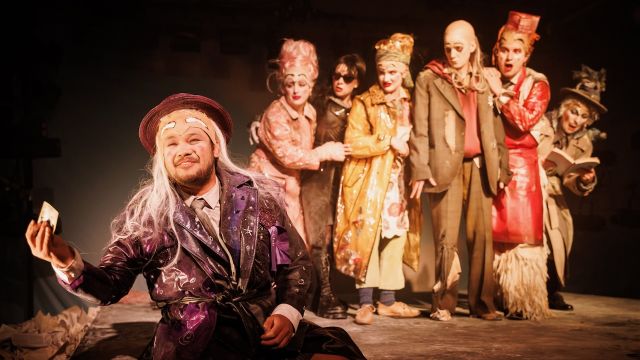Rhinoceros
Spinning Plates Co. demonstrate exceptional inventiveness in this quirky and highly stylised production. It maintains all the political spirit of Ionesco’s text while carefully and effectively infusing it with the absurdist and bizarre qualities that characterise his work. The attention to detail in the characterisations, the staging and especially the costuming is truly impressive. The inhabitants of this fictional town are subject to an invasion by rhinoceros, slowly but surely transforming them, one by one, into the beasts. Despite the ridiculous and preposterous nature of their transformation they eventually all succumb to the visceral and forceful appeal of the animal.
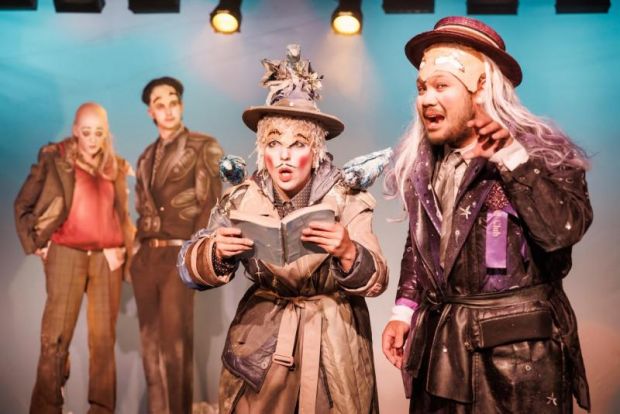
The costuming is astonishing not only in the way it captures the characters but the enormous detail and effervescence of the design. Each performer appears like an independent work of art that contributes to a collective hallucinatory vision of the small provincial town. The layers of information in each costume brings the personas to life in an almost cartoonesque manner. Yet, the parody and intensity of the performance style elevates them to complex individuals whose psyche is very identifiable.
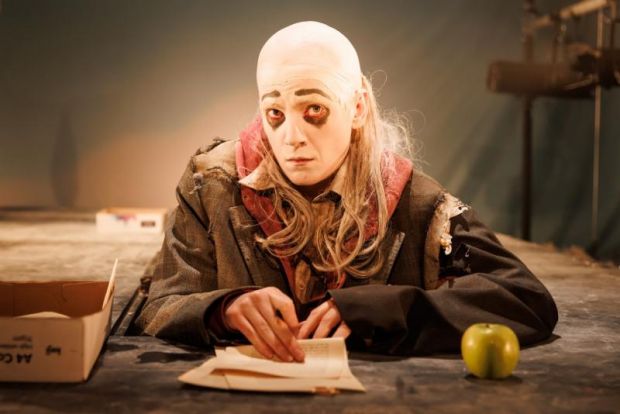
Bérenger (Cait Spiker) is particularly well conceptualised. There is no subtlety in the suggestion of Bérenger’s unkempt and dishevelled appearance, but this combined with his extraordinarily amiable demeanour gives the character enormous appeal. Spiker is able to deploy the costuming with a Chaplinesque pathos which is truly mesmerising and intriguing. One of the highlights of the show is the actual transformation into a rhinoceros of Bérenger’s close friend, Jean (James Cerché). The process occurs in real time and is both hilarious and disturbing. It especially focuses on the internal struggle of resistance while being overwhelmed by the animal force.
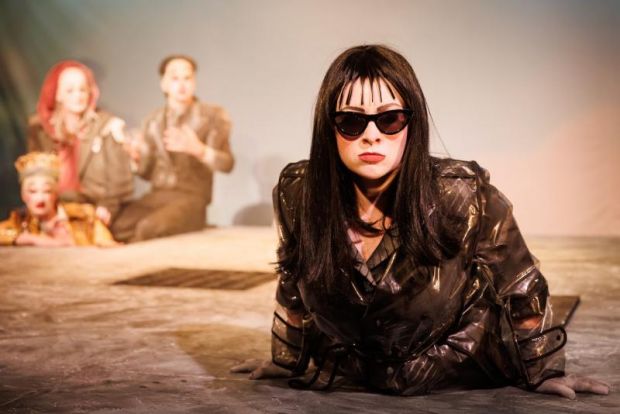
The same attention to detail is displayed in the staging where the routine of bureaucracy and the monotony of everyday life make each of the characters highly susceptible to the rhinoceros invasion. The simplicity and ingenuity of the set design is evident in the humorous use of trap doors and piles of leaves of paper; folded, crushed, torn, or discarded. The gradual disarray of the set and the props emphasises the psychological descent of the characters as they gradually turn into animals. The presence of the beasts is rendered threatening via the continued use of the sound of an angry stampede. The reverberation of this thumping and alarming sound is unmistakably disturbing, and this effectively belies the absurdity of the premise of the play.
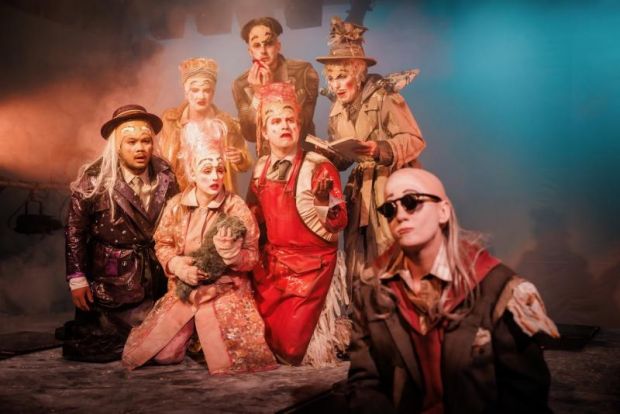
This production is a visual and aural treat that playfully and dramatically draws you into Ionesco’s bizarre imagination and the performance clearly delineates the lines between the strange events and the political allegory at the heart of the play.
Patricia Di Risio
Photographer: Darren Gill
Subscribe to our E-Newsletter, buy our latest print edition or find a Performing Arts book at Book Nook.

